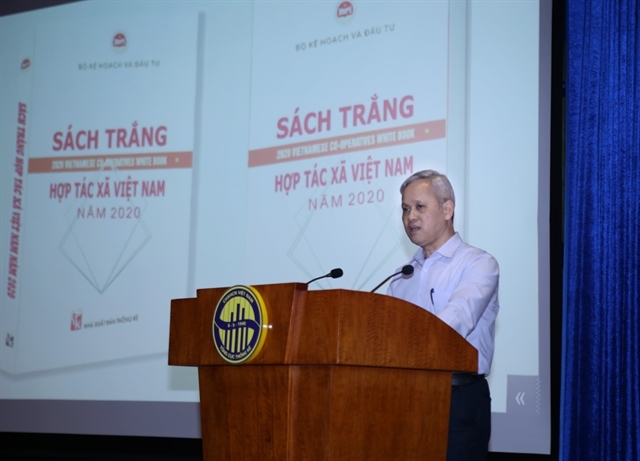
HÀ NỘI — The wood industry needs a fundamental change in export product lines and markets after the COVID-19 pandemic ends, a top wood official has said.
President of Việt Nam Timber and Forest Product Association (VIFORES) Đỗ Xuân Lập made the statement at a recent online conference as domestic production and export of timber and timber products have been heavily affected by the outbreak.
Lập said the export of furniture products including kitchen, bathroom and dressing tables, accounting for 60 per cent of total demand in the world, did not change much when the pandemic occurred globally, while demand for other wood products almost disappeared.
“The structure of Việt Nam’s product lines is currently unreasonable because its export products are not in great demand across the world. To restore production, businesses need to change their production following market trends,” Lập said.
He said the pandemic also showed that the industry needed to change its sales method from traditional offline channels to online. In addition, it is neccessary to form and promote links among businesses in the industry, build domestic supply chains and develop supporting industries.
“The impact of the COVID-19 outbreak shows Việt Nam’s current furniture export supply chains are not good, partially depending on imported raw materials and accessories, especially from China,” Lập said.
Deputy Minister of Agriculture and Rural Development Hà Công Tuấn said the pandemic’s impact showed the resistance of the domestic market was much higher than the export market.
“Prioritising the domestic market’s development will be one of strategies helping the industry break through. Through policies of public furniture purchases, the Government can lead the domestic market, giving priority to the use of legal and sustainable timber products for public works, encouraging the business community and craft villages to participate in this supply,” Tuấn said.
According to Võ Trí Thành, former Deputy Director of the Central Institute for Economic Management, besides the Government’s special support packages for those affected by COVID-19, businesses need to take advantage of the opportunities on offer.
For example, he said when the Chinese market gradually stabilises but local or international suppliers have not recovered, Việt Nam can take advantage of this period to expand its market share in China.
“This is also a period of rethinking and re-planning. Enterprises need to be flexible, calm and follow the trends to stand firmly,” Thành said.
Vice Chairman of Bình Dương Furniture Association (BIFA) Huỳnh Quang Thanh said banks should work with enterprises to overcome the pandemic’s impact.
“Banks are now our 'ventilator' but they said the more risky the higher interest rate. I think the Government should control this problem, pushing up the implementation of policies to ensure benefits for businesses,” Thanh said.
A VIFORES survey of 124 wood processing businesses showed that 76 per cent of firms in the Vietnamese wood processing sector reported total initial damage of VNĐ3.066 trillion (US$129.86 million) due to the COVID-19 pandemic, with most firms reducing production scale and some stopping operation.
About 24 per cent of enterprises had not yet calculated their losses. In addition, 51 per cent of surveyed firms said they had to shrink their production scale due to the pandemic, while 35 per cent were operating normally but will have to suspend production in the near future.
Ngô Sỹ Hoài, Vice President and General Secretary of VIFORES, said with the survey results, it would difficult to hit the target of $12 billion in export turnover this year.
“The export growth of the industry in 2020 may be zero,” Hoài said.
Chairman of the Handicraft and Wood Industry Association of HCM City (HAWA) Nguyễn Quốc Khánh mentioned the three most important criteria for businesses to recover, including speed, creativity and optimism.
He said one of the most urgent issues for Vietnamese wood enterprises at this time is to speed up the application of digital technology. — VNS































